
Indoor gardening is not just about putting plants in a pot and giving them water.
It’s actually more complicated than that. To make your plants happy and healthy, you need to understand some important things like how much light they need, how humid the air should be, and what kind of soil is best for them.
Growing plants indoors can be super fun and rewarding, but it needs a little extra care.
By learning about these special needs and how they work together, you can become a great indoor gardener and make your plants thrive.
This will help you discover the secrets to making your indoor plants strong and beautiful.
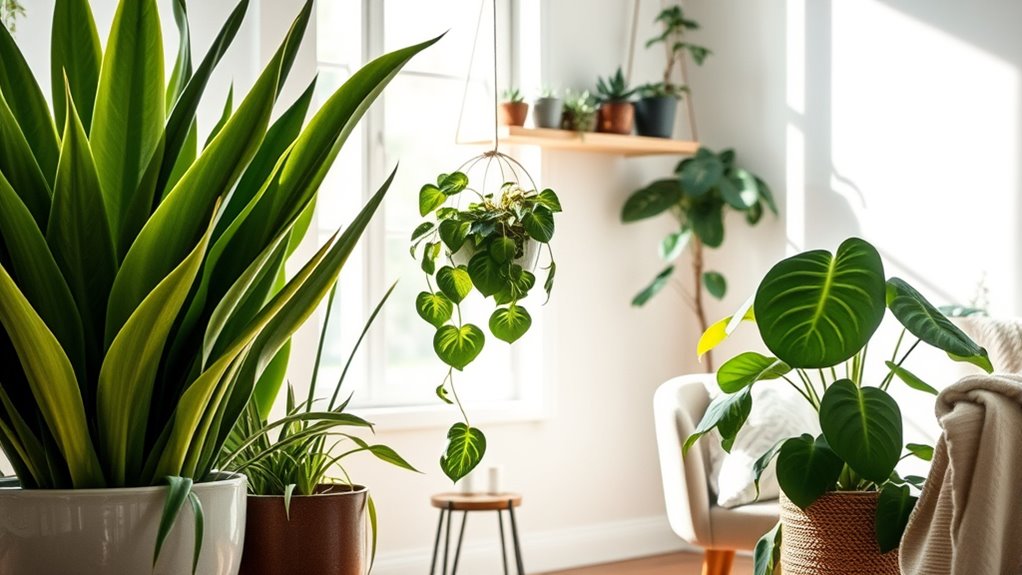
Choosing the right plants for your space is essential for ensuring they thrive and enhance your environment. Consider factors such as light availability, humidity levels, and temperature fluctuations in your home. Low-light areas may be suited for snake plants or pothos, while brighter spaces can accommodate succulents and fiddle leaf figs. Additionally, assess your maintenance preferences; some plants require more attention than others. Matching plants to your conditions creates a harmonious indoor garden.
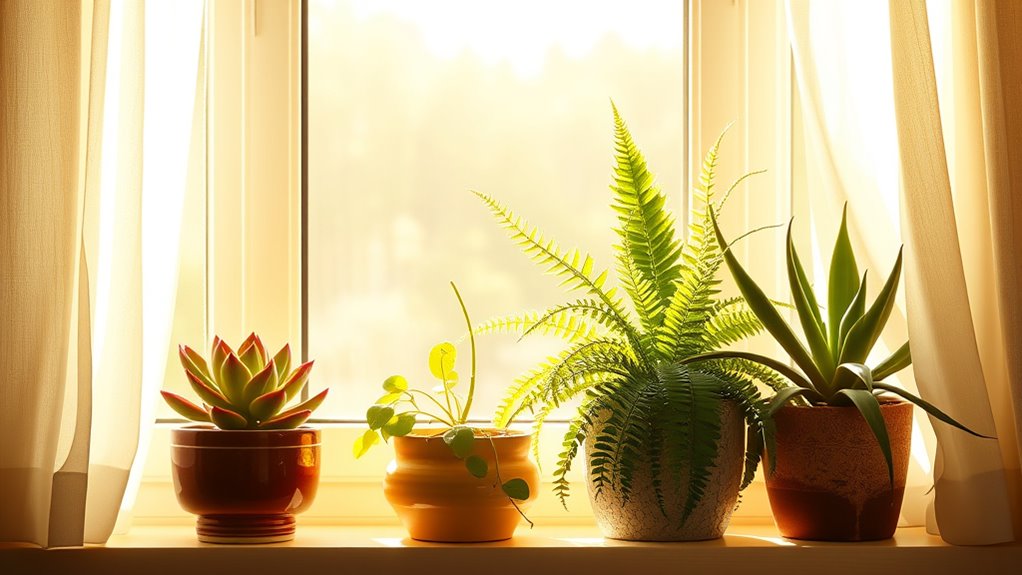
Understanding light requirements is essential for indoor plant care, as different plants thrive in varying light conditions. Some plants, like succulents and cacti, flourish in bright, direct sunlight, while others, such as ferns and snake plants, prefer low to moderate indirect light. Assess your space by observing how much natural light each area receives throughout the day, and position your plants accordingly to guarantee they receive the right amount of light for ideal growth and health.
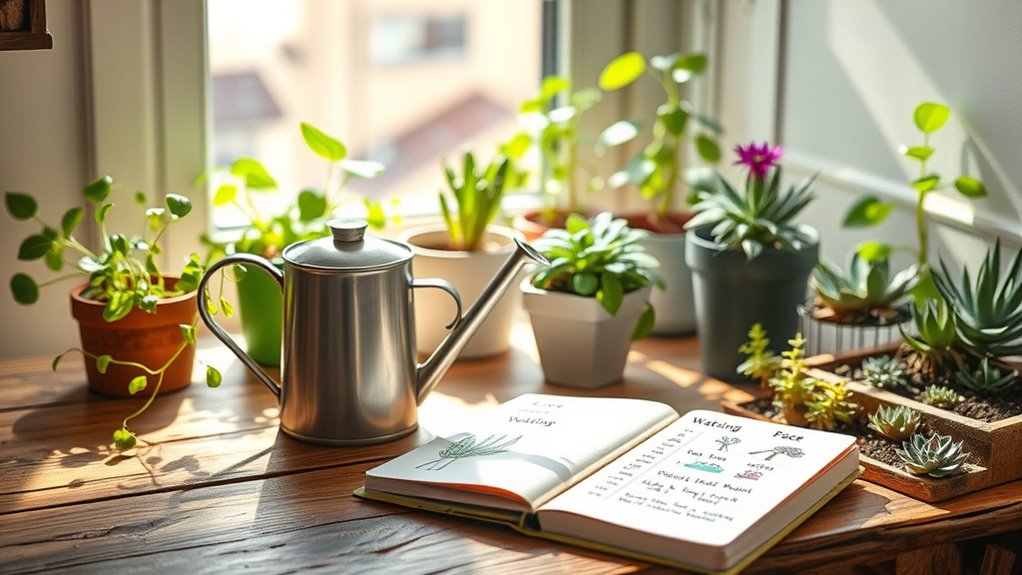
Creating a watering schedule is crucial for maintaining the health of your indoor plants. Each plant has unique water requirements based on factors such as species, size, and environmental conditions. To develop an effective schedule, research the needs of your specific plants and observe their moisture levels regularly. Consistency is key, so consider setting reminders to water at the same time each week. This routine helps prevent overwatering or underwatering, promoting lush growth and vigor.
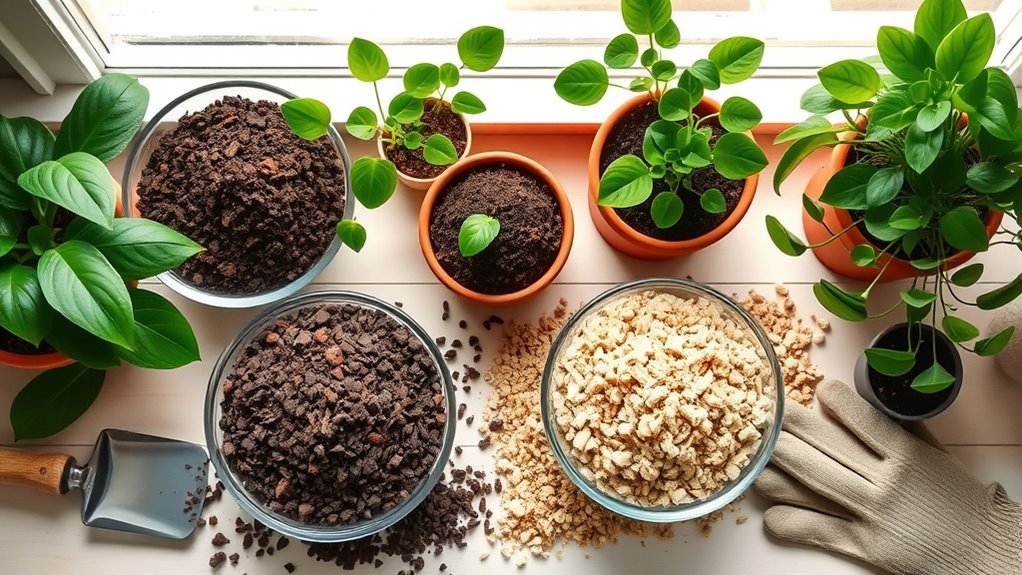
Using the right soil is essential for healthy indoor plants. Different plants have specific soil requirements, influencing moisture retention, drainage, and nutrient availability. A well-draining potting mix helps prevent root rot for plants that prefer drier conditions, while a moisture-retaining blend is better for those that thrive in humid environments. Always guarantee proper aeration by selecting a mix with added perlite or vermiculite, which enhances root health and overall plant vigor.
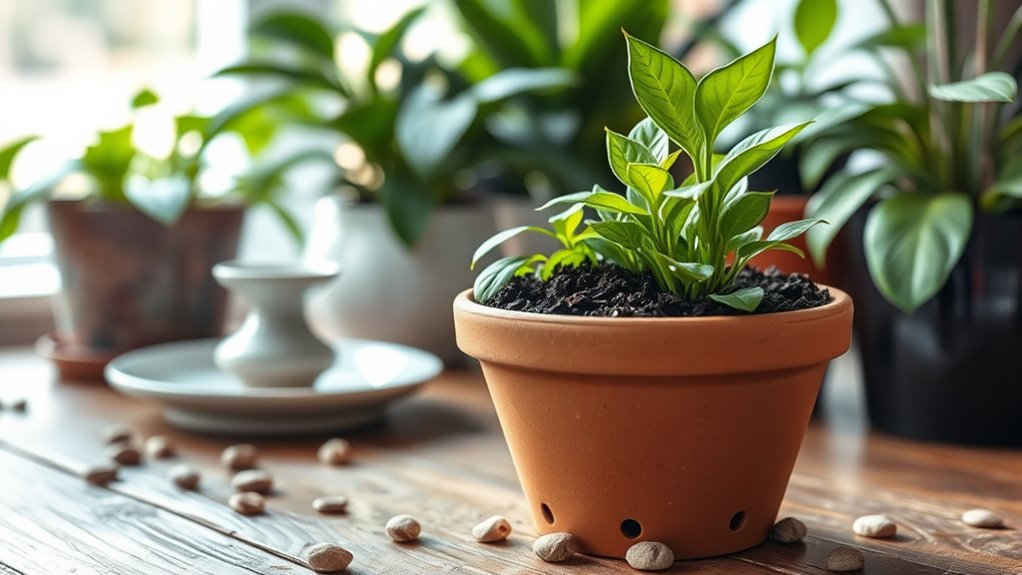
Proper drainage is vital for the health of indoor plants. It prevents water from accumulating at the bottom of the pot, which can lead to root rot and other moisture-related issues. To guarantee adequate drainage, choose pots with drainage holes and use well-draining potting mix. Additionally, elevating the pot slightly can promote airflow. Regularly check the soil’s moisture level and adjust your watering routine accordingly to maintain a healthy balance.
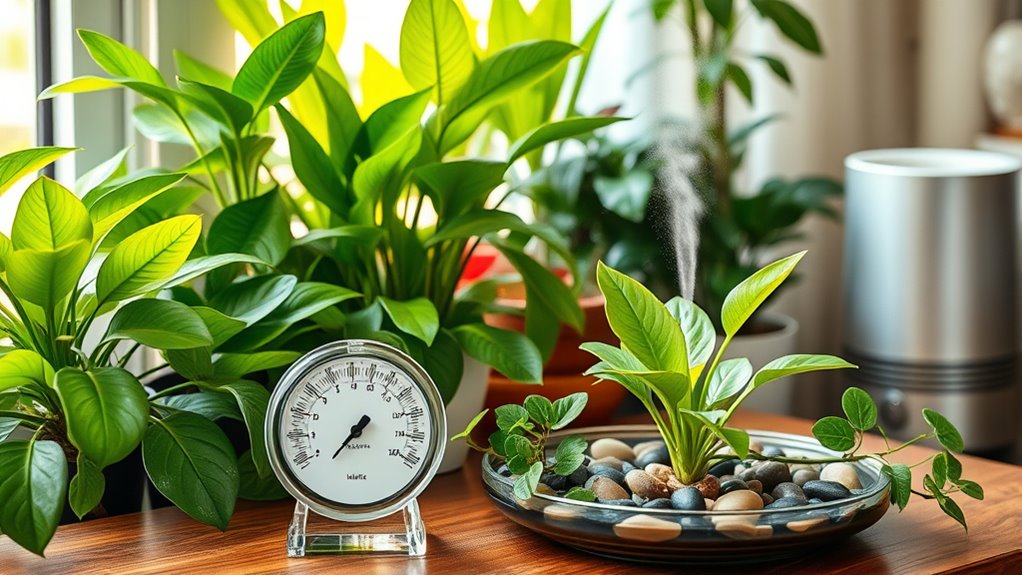
Maintaining ideal humidity levels is essential for the health of indoor plants, as most thrive in environments with humidity ranging from 40% to 60%. Low humidity can lead to dry leaves, browning tips, and overall stress on the plant. To monitor and address humidity, consider using a hygrometer for accurate readings. Increase moisture with regular misting, placing plants on humidity trays, or using a humidifier, especially during winter months when indoor air tends to be drier.
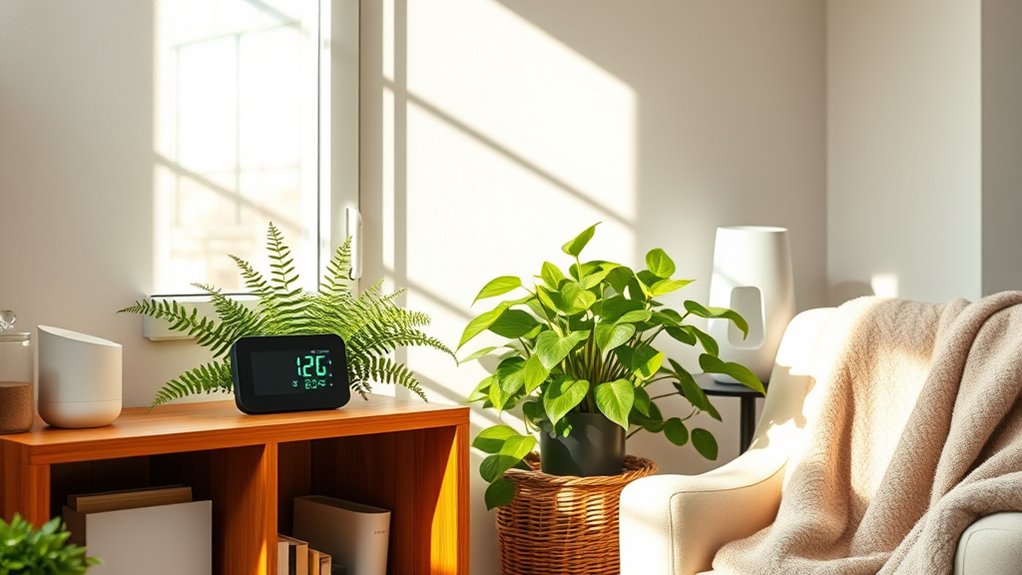
Maintaining an ideal temperature for indoor plants is critical for their health and growth. Most houseplants thrive in temperatures ranging from 65°F to 75°F (18°C to 24°C). Avoid placing them near drafts, heaters, or air conditioning vents, as sudden temperature fluctuations can stress the plants. Additionally, it is important to monitor humidity levels, as overly dry or damp conditions can affect plant vitality. Regularly check the temperature to create a stable environment for your green companions.
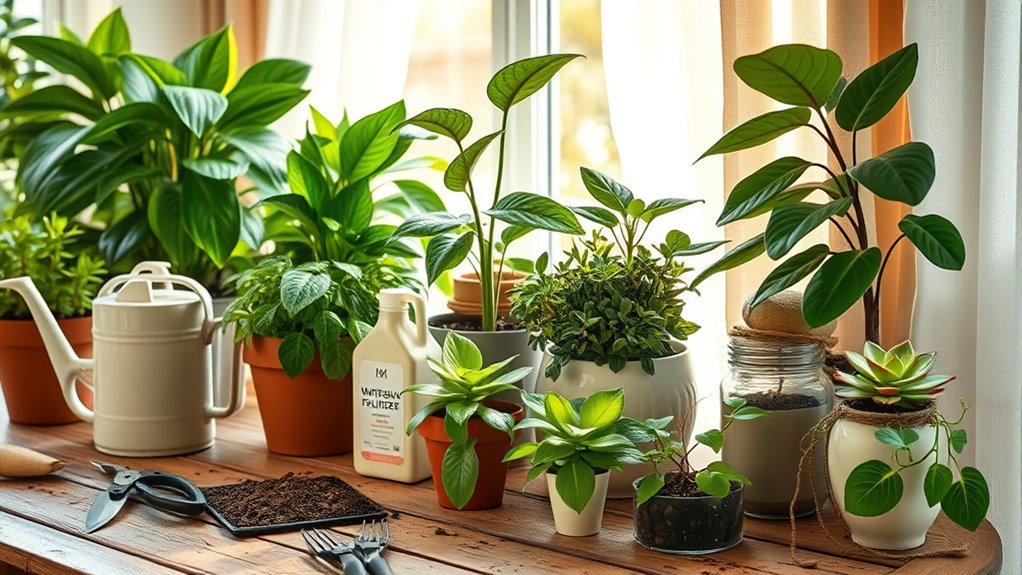
Fertilizing your indoor plants regularly is vital for their health and growth. Indoor plants can deplete soil nutrients over time, so using a balanced, water-soluble fertilizer every 4-6 weeks during the growing season can replenish these nutrients. Dilute the fertilizer according to the package instructions to avoid over-fertilization, which can harm your plants. Always adjust the frequency and type of fertilizer based on your specific plant species to guarantee peak growth.
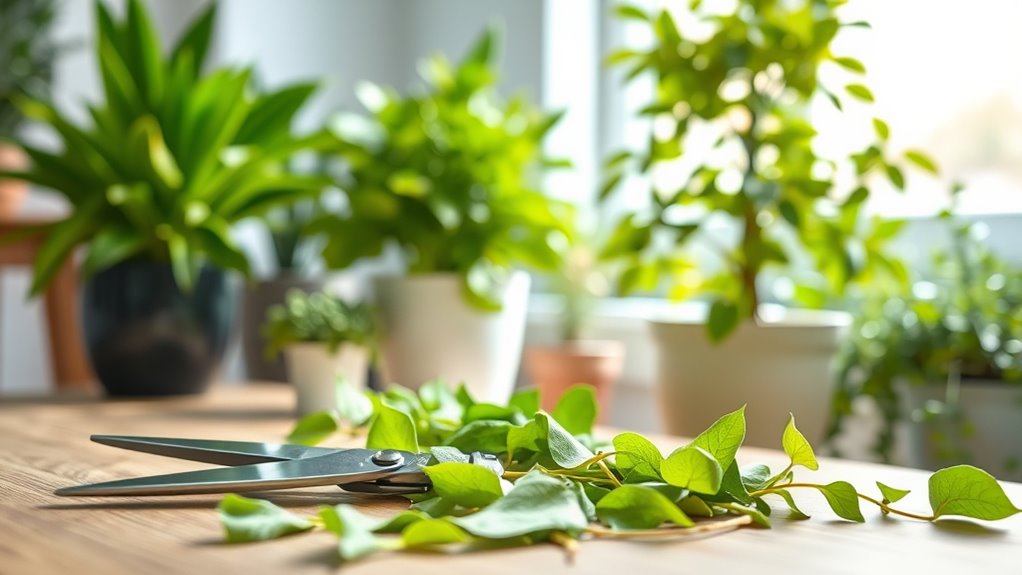
Pruning and trimming your indoor plants is essential for maintaining their health and appearance. Regularly removing dead or yellowing leaves encourages new growth and helps prevent pests and diseases. It’s important to use clean, sharp scissors or pruning shears for precise cuts. Focus on shaping the plant to promote a balanced structure, and don’t hesitate to trim back overly long stems to encourage bushier growth. Always research specific plant needs, as different species have varying pruning requirements.
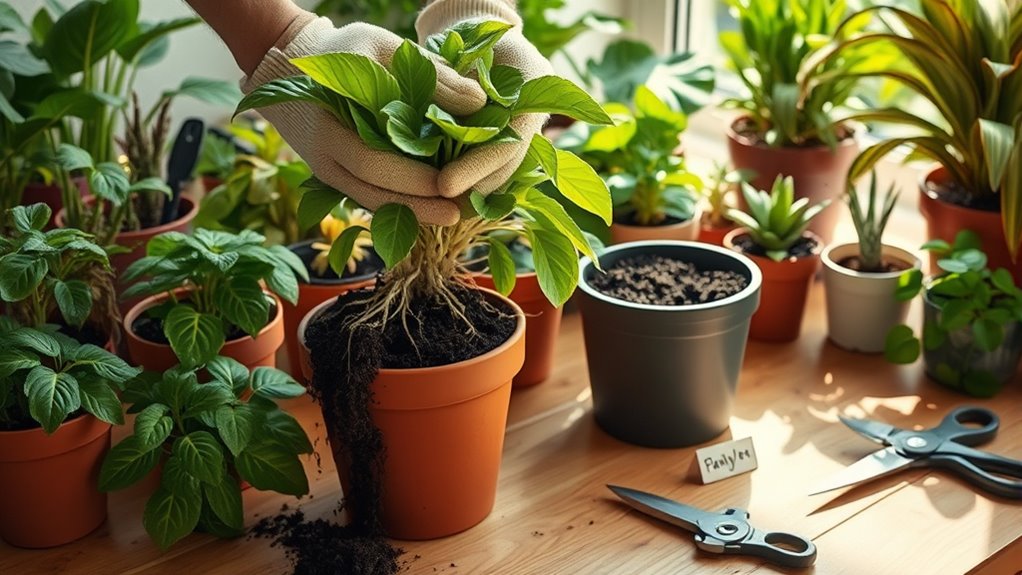
Transplanting your indoor plants is essential for their growth and overall health. When the roots become cramped or the soil quality deteriorates, it’s time to contemplate moving them to a larger pot with fresh soil. This helps in providing ample space for root development and replenishing nutrients. Always choose a pot with drainage holes, and carefully handle the plant to avoid damaging the roots. Regularly check for signs such as stunted growth or yellowing leaves to determine when a transplant is necessary.
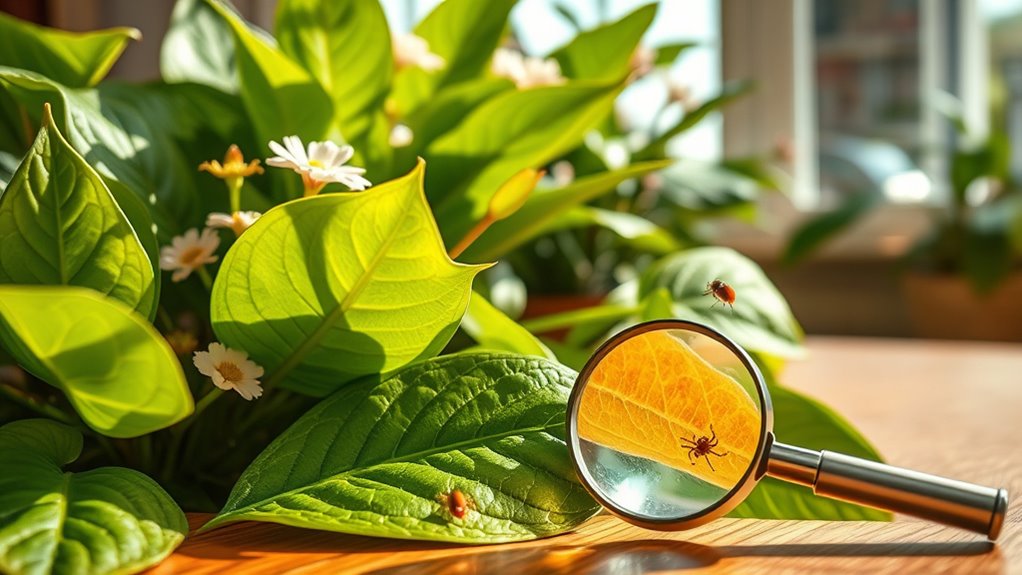
When caring for indoor plants, it’s crucial to monitor for pests regularly. Common pests like spider mites, aphids, and mealybugs can quickly damage your plants by feeding on their leaves and stems. Look for signs such as webbing, sticky residue, or discoloration. If you notice any pests, act quickly by using insecticidal soap or neem oil. Maintaining proper humidity and cleanliness can also help prevent infestations, keeping your plants healthy and thriving.
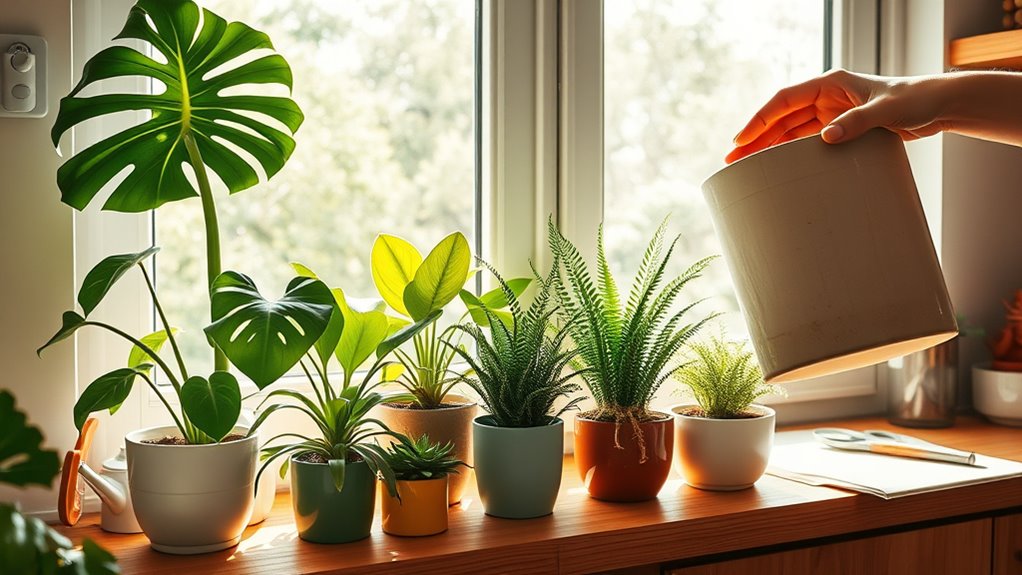
Rotating your indoor plants is essential for promoting even growth and preventing them from leaning towards the light source. By turning your plants every few weeks, you guarantee that all sides receive adequate sunlight, fostering a more balanced shape and healthier foliage. This simple practice encourages stronger stems and prevents the plant from becoming lopsided. Plus, it gives you a chance to inspect all areas for pests or disease, ensuring your greenery thrives.
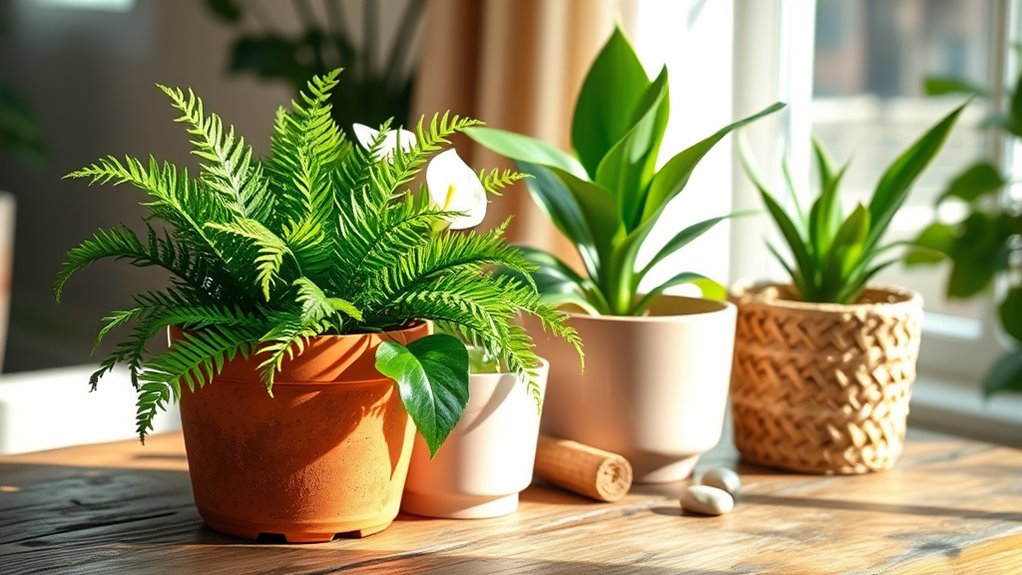
Using appropriate containers for your indoor plants is essential for their growth and health. Choose pots with drainage holes to prevent water from accumulating, which can lead to root rot. The size of the container should allow for some growth; too small can stunt development, while too large can retain excess moisture. Opt for materials like terracotta or ceramic that provide breathability, helping to maintain a balanced moisture level in the soil.
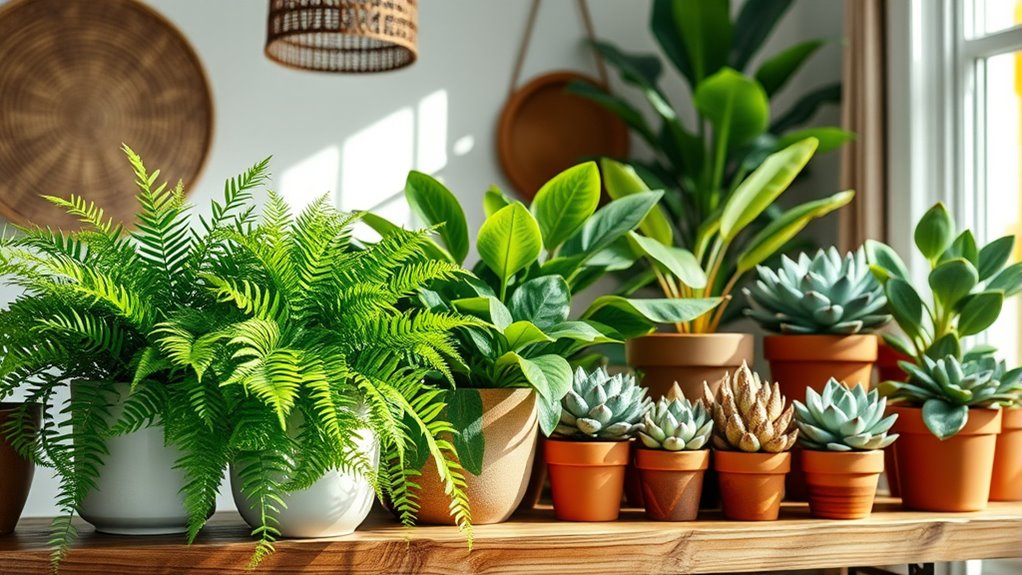
Grouping plants by their needs is essential for successful indoor gardening. By clustering plants that require similar light, humidity, and watering conditions, you can simplify care routines and create an ideal environment for growth. For example, placing high-humidity-loving plants together, like ferns and tropical varieties, allows you to maintain the necessary moisture without affecting drought-tolerant species. This practice not only streamlines maintenance but also enhances the aesthetic appeal of your indoor space.
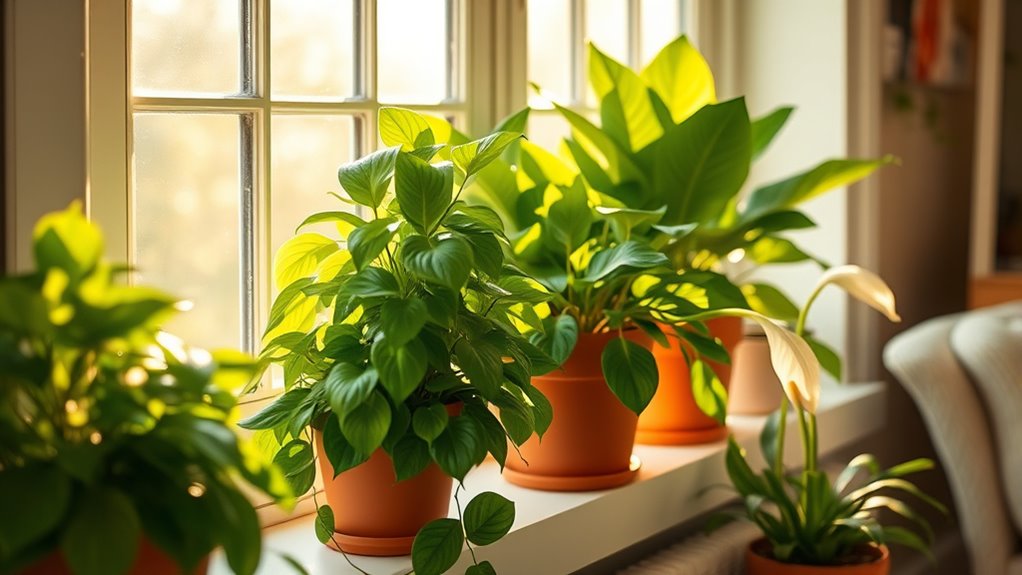
When caring for indoor plants, harnessing natural light is crucial for their growth and vigor. Positioning your plants near windows can provide the bright, indirect sunlight they require. Be mindful of the variations in light throughout the day and across seasons; some plants may thrive in south-facing windows while others prefer east or west exposure. Rotate your plants periodically to guarantee all sides receive adequate light, promoting even growth.
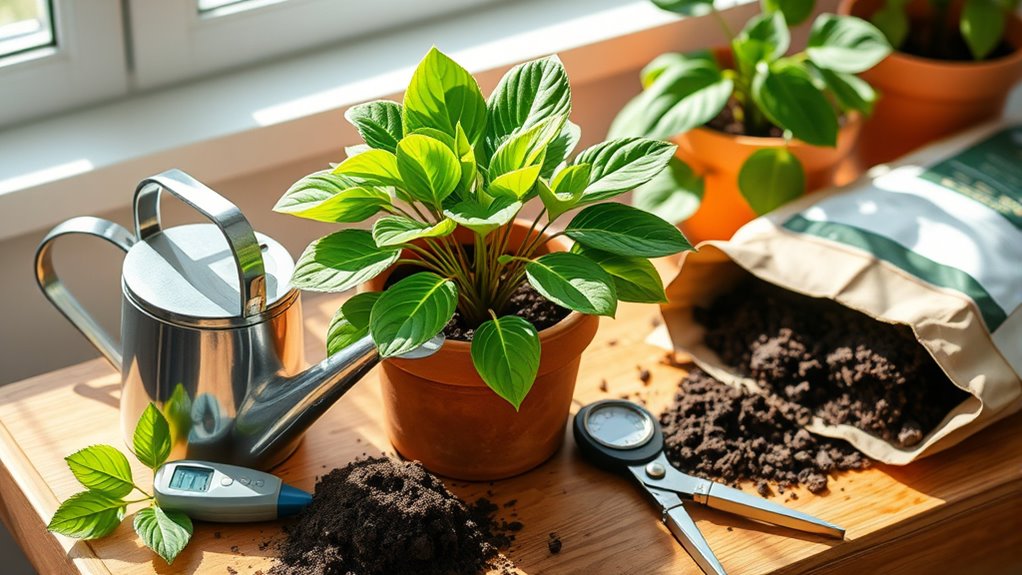
Incorporating indoor plant care tools can greatly enhance your plant-keeping experience. Essential tools such as moisture meters help you monitor soil hydration, ensuring optimal watering schedules for your plants. Pruning shears are perfect for maintaining plant health by removing dead leaves and encouraging new growth. Additionally, a good quality potting mix and appropriate pots with drainage holes can create an ideal environment for your plants to thrive. Equip yourself with these tools to simplify and elevate your indoor gardening routine.
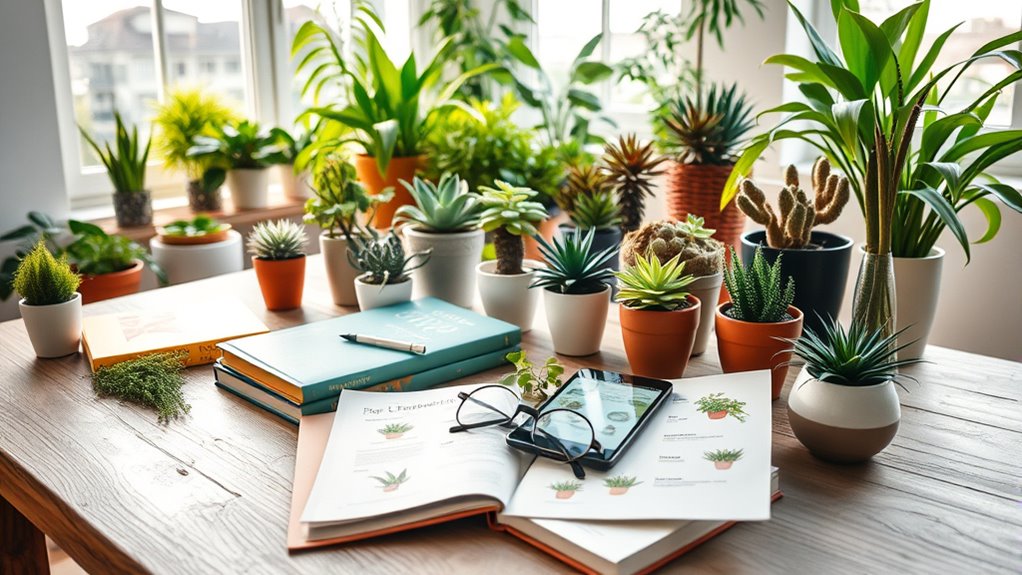
Educating yourself continuously about indoor plant care is essential for nurturing healthy, thriving plants. Stay updated on the latest research, techniques, and trends by reading books, attending workshops, or following reputable blogs and social media accounts. Understanding specific plant needs, such as light requirements, watering schedules, and pest management, will enhance your confidence and success as a plant parent. Encourage curiosity and exploration to create a lush indoor garden that flourishes over time.
To sum up, as you cultivate your indoor garden, remember that thriving plants won’t miraculously sprout just from a sprinkle of water and a wish. Ironically, the greatest nurturers often start with a black thumb, learning from their missteps. By diligently applying these tips, you transform your living space into a lush sanctuary, where each leaf stands as a symbol of your growing mastery—not merely a collection of green props waiting for someone to turn on the sunlight.

Don't let aphids, slugs, and caterpillars ruin another plant. Take back control with simple, natural methods that actually work.